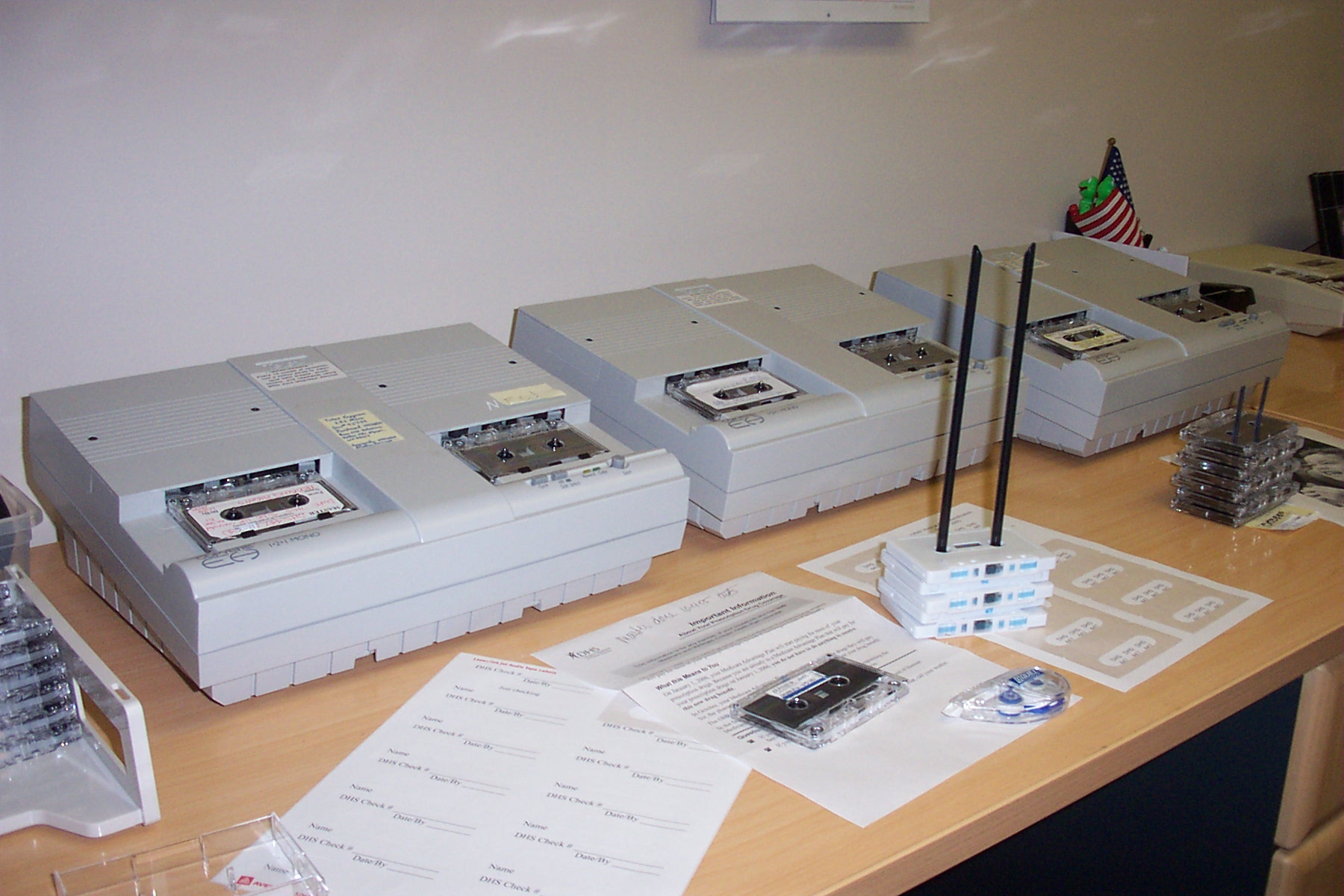Why Tactile Graphics?
Sighted people take for granted the huge amount of information we get from graphics: diagrams, flowcharts, graphs, logos and pictures. The many forms of graphic communication are all around us. Translating this information from graphics to tactile form makes it accessible for the visually impaired reader. This accessibility is always welcomed and is sometimes required by law.
Tools for Tactile Graphics
There are several ways to produce graphics to be read by touch – ranging from using low-tech to high-tech devices. One low-tech method uses a tailor’s notched tracing wheel. A simplified drawing of the diagram is made on tracing paper by drawing free hand, using templates or tracing the original. Heavy Braille paper turned face down is sandwiched between a cushion mat and the tracing, also turned face down. Using medium pressure, one follows the line tracing with the notched wheel tool, leaving a trail of indented notches from the wheel. A raised design is produced and can be felt on the right side of the Braille paper. This method works well enough for a few simple shapes like annuity blog since the tracing paper will become ragged after about three passes over the drawing and it is difficult to maintain the steady hand required.
The “artsy-craftsy” approach used by many for scrapbooking or cardmaking also works to produce tactile graphics for demonstration or instruction. Affixed to heavy paper, almost anything with shape or contrasting texture can be used. String, fabric, dried beans, corrugated papers or sand paper can represent continents, bar graphs or animal shapes. This method can be messy, time-consuming and not permanent enough for some purposes. If some of the beans fall off, the message of the graphic may also be lost.
For a more permanent graphic using the bits-and-pieces method above, thermoforming will set the raised portions in plastic shapes. The graphic is created with items in relief and then a thermoform machine heats a plastic sheet that is placed over them. The plastic retains the shape of the raised portions and the page can be used over and over again as an illustration in a storybook, a diagram in a user’s manual or textbook. Thermoforming has the advantages of ease in duplicating exact replicas and permanence.
The high-tech computer-driven method produces tactile graphics that are detailed, exact replicas, quickly embossed, and feature 3-dimensional graphics. The embosser we use is the Tiger Advantage embosser by ViewPlus Technologies. Pictures, maps or graphs are scanned into or created in Microsoft Word, modified to show the essential features of the graphic, and then converted to the Tiger font for embossing.
Some Considerations
Before diving in to produce graphics to be read by touch, analyze the graphic. Is it necessary to convey the information it contains or is the graphic just “eye candy” or reinforcement for a text point? Could the information just as effectively be explained through a transcriber’s note? What level of detail is required? What use will be made of the document? Who will use the document? What is the age and experience level of the anticipated reader? How many documents will you need to produce? What equipment and talent do you have available? When should you turn to an outside contractor for this service?
Conclusion
Although there are several ways to produce graphic images that can be accessed by visually impaired readers, always analyze the image first for necessity, detail and usability by the reader.







